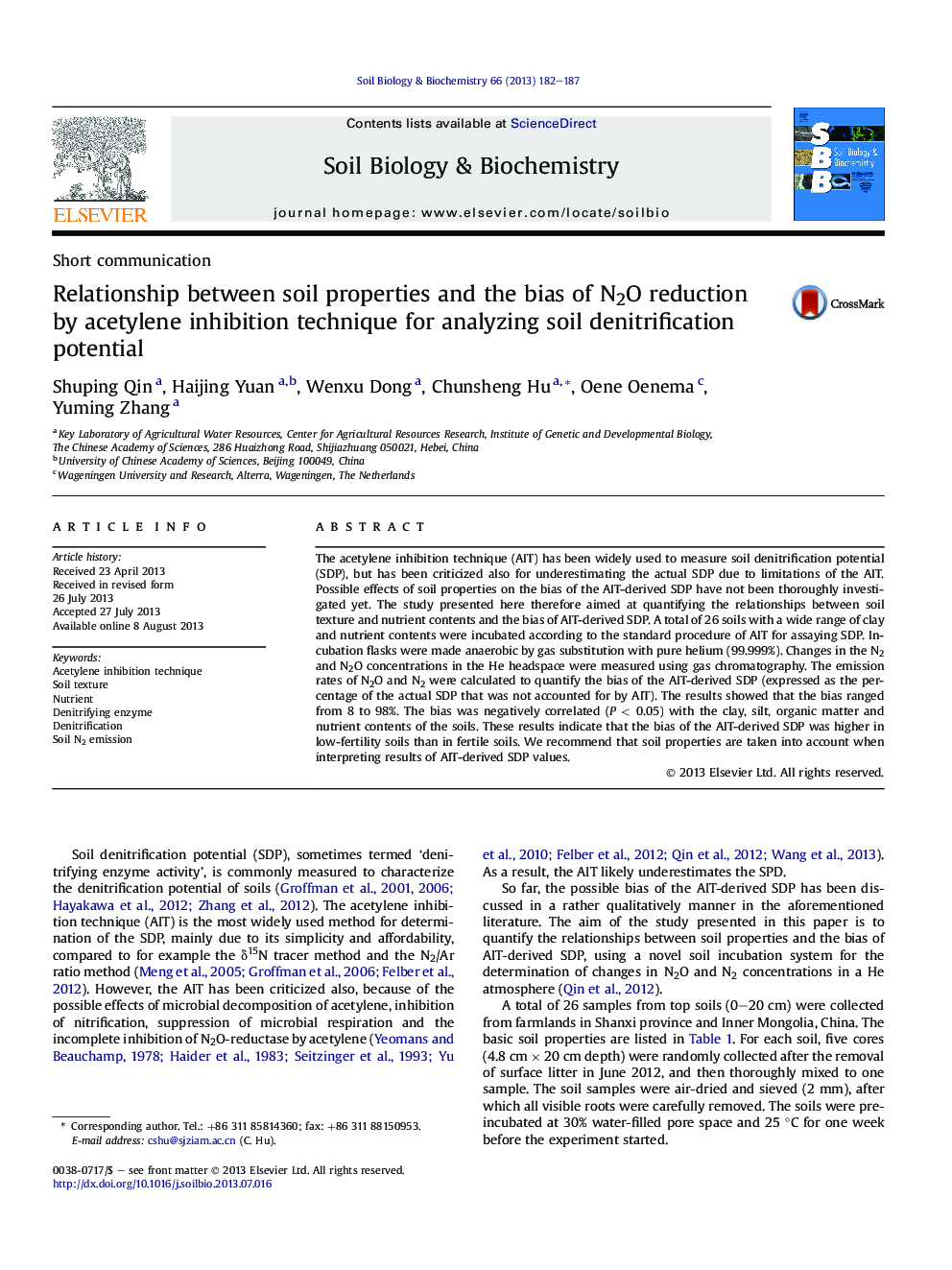| Article ID | Journal | Published Year | Pages | File Type |
|---|---|---|---|---|
| 2024695 | Soil Biology and Biochemistry | 2013 | 6 Pages |
•Bias of C2H2 inhibition technique ranged 8–98% for denitrification potential assay.•The bias correlated negatively with soil organic matter and nutrients contents.•Acetylene inhibition technique should be sparingly used in infertile soils.
The acetylene inhibition technique (AIT) has been widely used to measure soil denitrification potential (SDP), but has been criticized also for underestimating the actual SDP due to limitations of the AIT. Possible effects of soil properties on the bias of the AIT-derived SDP have not been thoroughly investigated yet. The study presented here therefore aimed at quantifying the relationships between soil texture and nutrient contents and the bias of AIT-derived SDP. A total of 26 soils with a wide range of clay and nutrient contents were incubated according to the standard procedure of AIT for assaying SDP. Incubation flasks were made anaerobic by gas substitution with pure helium (99.999%). Changes in the N2 and N2O concentrations in the He headspace were measured using gas chromatography. The emission rates of N2O and N2 were calculated to quantify the bias of the AIT-derived SDP (expressed as the percentage of the actual SDP that was not accounted for by AIT). The results showed that the bias ranged from 8 to 98%. The bias was negatively correlated (P < 0.05) with the clay, silt, organic matter and nutrient contents of the soils. These results indicate that the bias of the AIT-derived SDP was higher in low-fertility soils than in fertile soils. We recommend that soil properties are taken into account when interpreting results of AIT-derived SDP values.
